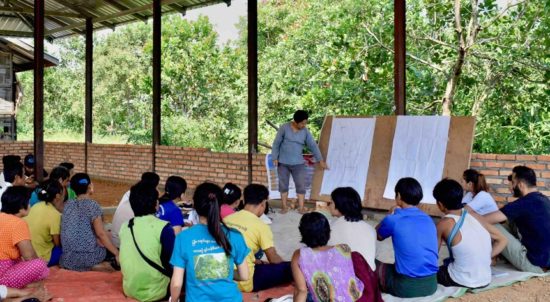Why DFI Clients Should Tell Communities about Accountability Mechanisms

Accessibility is one of the key criteria for an effective accountability mechanism, but people can’t access a mechanism they don’t know exists. Too often, communities harmed by international development finance are not informed about the accountability mechanisms available to address their grievances.
One simple but significant way to make accountability mechanisms more accessible is for development finance institutions (DFIs) to require their clients and sub-clients to inform project-affected communities about the mechanisms. Fortunately, over the past couple of years, several DFIs have added this requirement to their environmental and social safeguards policies. The remaining DFIs whose policies lack this requirement should add it immediately.
The Issue: Communities Are Not Made Aware of Accountability Mechanisms They Might Need
Last year, an independent evaluation of the Inter-American Development Bank’s (IDB) accountability mechanism found that, despite the mechanism’s own outreach activities, it remains relatively unknown in the countries where it operates. This problem is not unique to IDB. Our experience supporting communities seeking justice for harm caused by development finance confirms that they are frequently unaware that accountability mechanisms are available to them. This is especially true in cases where harmful projects are funded through financial intermediaries, which can make it almost impossible for communities to know that a DFI with an accountability mechanism is an investor. One of our cases supporting a community in Lamu, Kenya shows that lack of transparency about whether an investment is governed by a corresponding accountability office can lead to delays in filing that render a complaint ineligible, allowing the DFI to escape accountability for harm.
Effective accountability mechanisms can be transformative processes for communities seeking to defend their human rights and protect their environment. In 2017, communities in Haiti filed a complaint when the IDB co-financed the construction of an industrial park on their farmland that destroyed their livelihoods. After negotiating an agreement with the IDB and Government of Haiti, community members are beginning to receive land as compensation for what they lost. In 2010, communities in Mexico facing environmental, cultural and safety harm from a hydroelectric project filed complaints to an accountability mechanism that resulted in the investors stopping the harmful project. In each of these cases, the communities happened to find Accountability Counsel’s support in navigating the complaint process through word of mouth and civil society networks. But most impacted communities never get the benefit of support from civil society with expertise in accountability mechanism processes.
A Necessary Part of the Solution: Requiring Clients to Disclose Accountability Mechanisms to Communities
Because DFI clients (and sub-clients) are responsible for implementing development projects and therefore interact directly with local communities, they are often the communities’ primary source of information about projects.
Requiring clients to inform communities about accountability mechanisms is not burdensome. The environmental and social safeguards that govern each DFI already require clients to consult with communities before and throughout project implementation. In addition, many safeguards require clients to establish and tell communities about their own project-level grievance redress mechanisms. DFI-level accountability mechanisms differ from project-level grievance mechanisms in that they are independent from the client and DFI management, and they can evaluate whether the DFI complied with its own rules. It is critical for communities to know that they have access to both options, and it is easy for clients who are already sharing information about one to also share information about the other.
Additionally, it is important for DFIs to explicitly state client disclosure requirements in their policies for transparency’s sake and so that clients can be held accountable if they fail to disclose. It is not enough for the requirement to be buried in boilerplate in legal agreements between the DFI and client, which are either treated as confidential or not shared with communities directly.
The good news is that increasingly, DFIs seem to understand the importance of this requirement. In recent years, the following DFIs updated their environmental and social safeguards policies to require clients to disclose the availability of accountability mechanisms:
- Inter-American Development Bank’s Environmental and Social Policy Framework (2020)
- Asian Infrastructure Investment Bank’s Environmental and Social Framework (2021)
- Green Climate Fund’s Environmental and Social Policy (2021)
- European Investment Bank’s Environmental and Social Sustainability Framework (2022)
Other DFIs have recently included a client disclosure requirement in other public policies:
- U.S. International Development Finance Corporation’s Board resolution establishing its Office of Accountability (2020)
- African Development Bank’s (AfDB)’s Independent Recourse Mechanism Operating Rules and Procedures (2021).
Other DFIs should follow suit. Currently, the AfDB and the Asian Development Bank (ADB) are in the process of updating their environmental and social safeguards policies. While it is good that the AfDB has a client disclosure requirement in its accountability mechanism procedures, it should also integrate the requirement into its safeguards policy so that clients and sub-clients are publicly bound to disclose as a condition for financing. Meanwhile, the ADB should enshrine the same requirement in its own safeguards policy.
Including a client disclosure requirement in a policy is a necessary first step, but what ultimately matters is how well the requirement is implemented. As Accountability Counsel continues to support communities through the complaints process and track cases via the Accountability Console, we will watch for whether this policy trend translates into increased access to justice for communities.

